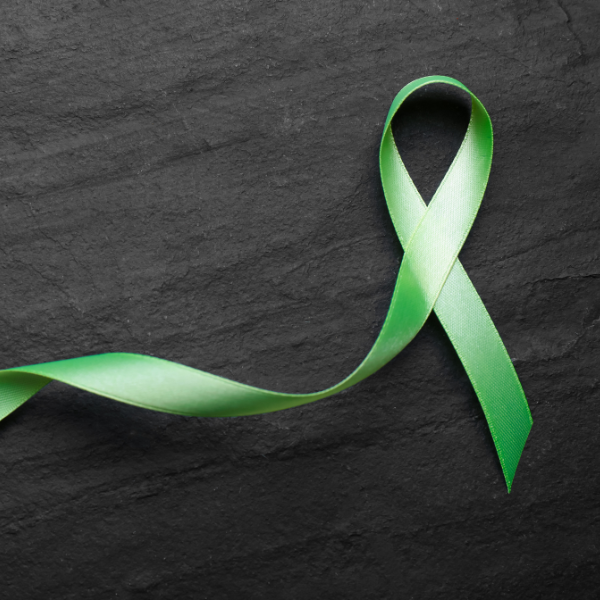Advocating for Mental Health Equity through Insight, Understanding, and Compassion
Originally published in College Health in Action, July 2022
When it comes to addressing the needs of minority populations, higher education generally holds a positive reputation. Many colleges and universities across the country have dedicated initiatives and programming related to cultural and ethnic diversity and inclusion. Over the past several years, college health and mental health has also recognized that providing effective medical care and support requires a nuanced approach that respects the various backgrounds of the students it serves. Campuses have also grown a greater appreciation for the impact diversity and inclusiveness has on everything from academic performance and student satisfaction to retention, attrition, and even alumni involvement. However, better health equity is still a work in progress, particularly for those in the college health environment who identify as LGBTQ+ (lesbian, gay, bisexual, transgender, queer/questioning, “plus” all other identities such as pansexual, nonbinary, asexual, and additional designations).
For students within the LGBTQ+ community, discrimination, fear, anxiety, stress, and depression are not only common, but also tend to exist in disproportionate numbers to students who identify as cisgender, heterosexual, or both (CisHet). The Trevor Project National Survey on LGBTQ Mental Health surveyed LGBTQ+ teens and young adults throughout the United States in 2021 to gain insight into the unique mental health challenges facing this group and provide useful data for mental health care providers and counselors working with young LGBTQ+ patients.
Some of the most poignant observations were that 42% of LGBTQ+ youth reported seriously considering attempting suicide in the past year, with 15% having attempted suicide. To place those figures in context, results from the most recent Youth Behavioral Risk Factor Surveillance System (YBRFSS) in 2019 showed that 18.8% of all high school students seriously considered suicide, with 8% having attempted it. The National Institutes of Health (NIH) recorded a 13.4% ideation rate and 1.3% attempt rate among all college students in 2021. Suicide rates are not the only indicators of mental health with disparities between LGBTQ+ students and their CisHet peers. Depression, anxiety, and substance use/abuse is also higher among members of the LGTBQ+ community. An analysis of the ACHA National College Health Assessment for Spring 2019 further outlines these imbalances among the college student population.
“LGBTQ+ students often have very different college experiences from their CisHet peers,” shares Dr. Joanna Schwartz, chair of ACHA’s LGBTQ+ Health Coalition and professor of marketing at Georgia College. “They are experiencing issues like anxiety, self-harm, discrimination, intimate partner violence, sleep disorders, eating disorders, and much more, usually in greater magnitudes and with fewer outlets for managing or coping with those issues.” She also points out that while the perception may be that LGBTQ+ students are only a small subset of the overall student population, the reality is quite different. “According to a large-scale survey from Gallup, 20.8% of people born between 1997 and 2003 identify as LGBT,” she says, with the reminder that not all people who identify as LGBTQ+ feel comfortable “being out” or saying so in public, for fear of judgment or discrimination. “In many college settings that is a group that is larger, or just as large as non-white students, first-generation college students, Latinx, or plenty of other minorities we’ve been working to be more inclusive towards. The same mindset absolutely applies with these students.”
Dolores Cimini, PhD, a licensed psychologist and director of the Center for Behavioral Health Promotion and Applied Research at Albany University agrees. “LGBTQ+ people experience very similar issues as other minority groups with regard to oppression, discrimination, microaggressions, and other experiences that can be very stressful,” she explains. “The specific issues that trigger these responses can be as unique as the individual students experiencing them.”
For this group, Cimini outlines distal or external stressors including (but not limited to):
Prejudice events:
- Heterosexist/cissexist speech
- Discrimination
- Harassment
- Rejection
- Invalidation
Structural stigma (particularly for transgender and nonbinary students):
- Gender-segregation (public spaces)
- Legal restrictions
At the same time they are managing external stressors, LGBTQ+ students are typically also dealing with one or more proximal or internal stressors, such as:
- Internalized stigma (self-directed anti-LGBTQ+ attitudes)
- Concealment of stigmatized identity
- Expectations of rejection
- Self-blame
- Vigilance
“These stressors are additive and cause adverse health outcomes including psychological and psychiatric disorders,” continues Cimini. “[We must all] consider that we each have multiple identities that influence our experiences and that these all play major roles in our lives. It is not a minority identity in and of itself that causes worse mental health outcomes, but rather how we approach mental health for a specific minority group.”
Applying the same compassion and thoughtfulness given to other minority groups can be a helpful way for college health providers and counseling professionals to establish relationships with LGBTQ+ students seeking care. “As mental health providers, we generally accept that it’s impossible to directly relate to every possible minority group,” offers Alexandra Wang, a licensed psychiatrist, the immediate past chair of the ACHA LGBTQ+ Health Coalition, and mental health consultant to a number of on-campus counseling centers for colleges and universities in the Midwest. “If we have understanding of one group and the ways in which they feel left out or unsupported, we can apply similar understanding towards gender diverse or sexually diverse people. It’s the beauty and challenge of working in this field. We have the capacity as human beings to empathize without having to have personally lived that experience.”
The Impact of Anti-LBGTQ Legislation on Mental Health
Beyond the most common internal and external stressors already being faced by college LGBTQ+ populations, anti-LGBTQ+ legislation looms large for these students.
- Denial or criminalization of gender-affirming care,
- mandatory parental notifications of non-CisHet conformity,
- bans on transgender student athletes,
- single-gender restrooms laws,
- legalization of “conversion therapy,”
- and mandates that child protective services treat gender-affirming care as child abuse…
have been the focus of more than 250 bills nationwide, of which 15 states have passed into laws. A number of states also make it legal for a provider deny care to gender and sexually diverse people under religious exemption.
“Our oath to ‘first do no harm’ is critical in working with LGBTQ+ and other minority students. These are young people who are trying hard to succeed,” says Wang. “It is extraordinarily detrimental to not be able to participate in activities, or be told they must conceal who they truly are, or be blocked from seeking medical and mental health care specific to their needs. Social development is an important aspect of college. If these students feel they are being denied access to that experience, it can reinforce negative feelings and amplify mental health distress.”
A recent study by Child Trends, one of the nation’s leading research organizations focused exclusively on children and youth, confirms Wangs assertions. The four-year study found a correlation between the number of anti-LGBTQ+ laws being proposed in a given state and an increase in Crisis Line activity, particularly among LGBTQ+ youth. The study’s findings state, “The results of this exploratory analysis suggest that proposing anti-LGBTQ legislation may increase the number of LGBTQ youth who experience a mental health crisis. These preliminary findings suggest that the negative impacts of anti-LGBTQ legislation on LGBTQ youth may be broader-reaching than previously understood and may go beyond the specific provisions of such laws once enacted.”
“These bills are also against the guidance of the American Medical Association, the American Academy of Pediatrics, and the American Psychological Association recommendations regarding transgender and nonconforming gender care,” notes Schwartz, “as well as the position of the ACHA,” which states:
ACHA will continue to be a leading voice for action and advocacy to prioritize nondiscrimination protections for all LGBTQ+ students, faculty, and staff and encourages its member institutions to reach out to students, faculty, and staff to reiterate your college’s nondiscrimination policies and practices. Creating safe access to affirming, inclusive, quality health care must be the standard of care.
Post-Pandemic Repercussions
During the peak of the pandemic, the World Health Organization reported a 25% increase in anxiety and depression, with a disproportional increase among young people and women in particular. For LGBTQ+ teens and young adults, these challenges were even more pronounced, most notably due to a decrease in positive connections/interactions and an increase in negative ones. For college students, returning to families or communities that did not accept their gender identities was a considerable challenge. Some experienced financial or housing instability stemming from those circumstances. Others were forced to discontinue gender-affirming care and/or mental health care in an effort to conceal their gender identities and/or sexual orientations.
As students continue returning to campuses on a full-time basis, many who identify as LGBTQ+ will undergo ongoing impacts from decisions made during the pandemic. Anxiety, fear, self-blame, depression, and feelings of loss or grief can be amplified alongside various other stressors such as academics, social groups, and personal development.
Structural/Administrative Discrimination in Higher Learning
Although not as overt as legislation that deliberately and definitively denies equality to LGBTQ+ students, a number of college and university policies also present additional challenges for this group of students. The Jed Foundation’s Proud & Thriving Report and Framework outlines the how institutional policies may exacerbate the mental health issues of LGBTQ+ students:
Trans & Nonbinary Students
- Nondiscrimination, anti-harassment/bullying policies do not enumerate gender identity or expression • Gender-segregated facilities (e.g., restrooms, locker rooms, housing)
- Inability to put chosen names and pronouns into student information systems (“deadnaming”)
All LGBTQ+ Students
- Nondiscrimination and anti-harassment/bullying policies do not enumerate sexual orientation
- Lack of clear processes for reporting, responding to, and remediating victimization
- LGBTQ+ self-identification excluded from surveys and institutional data
- Targeting and inequitable enforcement of disciplinary policies and practices
- Lack of resources and student services that address their needs and experiences (e.g., LGBTQ+ office and staff, culturally competent physical health, counseling, and career services)
- Barriers to academic engagement (e.g., excluded from curriculum, classroom bullying or invisibility)
How Higher Education Can Improve
“If students are in pain, dying, and dropping out of school, the solution isn’t finding new ways to exclude them,” says Schwartz. “We do have a choice in what kind of environment we provide.”
With that in mind, Cimini recommends, “a comprehensive public health-informed approach supporting overall health and well-being, including implementation of prevention, early intervention, and treatment services that are responsive and relevant to LGBTQ+ students.” Wang and Schwartz also agree that working towards greater inclusiveness should be the goal, taking care not to unintentionally segregate the LGBTQ+ population, but rather make sure their identities and orientations hold equal side-by-side value with those of other groups.
Some of their recommendations include:
- Using LGBTQ+ affirming language campus-wide (as opposed to “defaulting” to CisHet language)
- Developing communities of allies on campus by hosting inclusive events
- Integrating knowledge on how to respond to LGBTQ+ discrimination into ongoing professional development for staff and students
- Embedding inclusiveness learning into pre-existing programs (e.g., orientation, annual trainings)
- Adding flexibility and autonomy at the registrar level for students to specify a name and pronouns other than that listed on a birth certificate
- Providing options for housing that is LGBTQ+ affirming and consider LGBTQ+ students and their needs on roommate matching forms
- Utilizing electronic health records (EHRs) that allow people to specify chosen name vs legal name and corresponding pronouns
- Encouraging LGBTQ+ inclusive clubs and organizations
- Designating gender neutral restrooms and other facilities, and make sure to identify these on campus maps and signage
- Offering campus health insurance that includes gender-affirming care as well as an included number of mental health/counseling sessions at no additional charge OR include a certain number of counseling sessions as part of a wellness or student activity fee to help remove stigma and privacy concerns
In doing so, colleges and universities can help mitigate the mental health challenges being experienced by LGBTQ+ students. The JED Foundation expresses this as, “cultivat[ing] protective mechanisms that contribute to the development of students’ resilience.”
What Campus Health Can Do to Further Support LGTBQ+ Students
In addition to the functional changes listed above, the campus health environment can also recognize the value of inclusiveness and diversity within all interactions – especially those related to mental health care or counseling.
“Counseling professionals need to be trained for LGBTQ+ populations and issues,” advises Wang. “Not all mental health counselors are equipped to help students in crisis based on a one-hour session on gender identity. It’s hard for students to relate even to mental health professionals if they lack a fluency.”
Including LGBTQ+ practitioners and staff members within mental health services team is one way to achieve this, but it is not the only way. Additional LGBTQ+ specific training can also be meaningful for all team members, as JED Foundation research further supports:
More than 80% of the counselors and administrators surveyed reported extensive experience supporting LGBTQ+ students. The majority indicated that they felt confident and competent to assess and support the needs of LGBTQ+ students. However, only 40% of counselors and 32% of administrators underwent training that had a specialized focus on LGBTQ+ students, and administrators reported less confidence in the skills of their staff. Nearly half of all administrators rated their staff as not at all skilled to work with LGBTQ+ students versus only 14% of counselors who said the same of their staff. Further, less than half of all administrators (vs. 74% of counselors) said their school provides good or excellent service to their LGBTQ+ students. Despite confidence in their individual skills and experience, less than six in ten counselors and administrators surveyed believed that they had been adequately trained to support the needs of LGBTQ+ students. Nearly all said they would welcome the opportunity to receive additional training to better support their LGBTQ+ students.
Outside of formal training, Cimini suggests that mental health providers and health care professionals can conduct a “checklist” aligned with published affirmative LGBTQ+ counseling guidelines:
- Engage in ongoing self-reflection on positionality
- Approach all interactions with cultural humility
- Begin to recognize heterosexist/cissexist events on campus
- Avoid making assumptions about the impact of prejudice events
- Reflect on possible ways to intervene when witnessing “CisHet-only” events
- Challenge cissexist/heterosexist language
Campus health and mental health services can also work together with on-campus organizations and the faculty and staff who are affiliated with them. Pride organizations, gender and sexuality resource centers, LGBTQ+ support groups, LGBTQ+ social events, student-led inclusiveness groups, and other stakeholders can provide valuable insight to clinicians in understanding what students on an individual campus may be facing.
As well, forging relationships with local LGBTQ+ community resources can be an effective way to further support these students. “We’re often session limited or time limited in campus health, but students have needs that extend beyond 6 to 8 weeks. Being able to make a warm-handoff to a community counseling practice can make a positive difference.” Wang also advocates for telehealth in the counseling environment, as it allows students to overcome transportation issues.
The Well-Being Return on Investment
When considering how to address any minority population, colleges and universities must balance mental health with various other goals of higher education. Fortunately, meeting the needs of LGBTQ+ students, institutions of higher learning are as equally aligned with those objectives as meeting the needs of international students, those for whom English is a second language, students with disabilities, cultural identities, and other groups.
“We all want our students to succeed,” says Schwartz. “We want good four-year and six-year graduation rates. We want to provide environments where students thrive, even or especially when people in a minority group experience challenges beyond the ‘typical’ student. The better we do at serving them, the more successful they will be. That’s what real inclusiveness seeks to achieve.”
Wang agrees. “If we’re not taking mental health into account, then we’re missing an important side of the story. If we don’t support mental health needs, it’s the same as not supporting physical health needs – students drop out, students transfer. If we don’t help them succeed here, how can we expect them to succeed at anything?”





